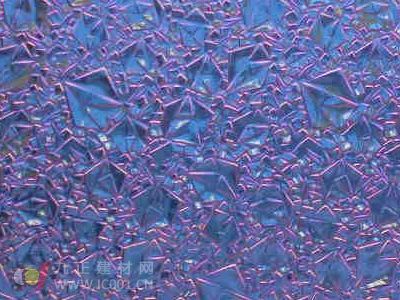Glass is now a common material found in many places. With the advancement of glass technology, new types such as colored glass have emerged. The glass industry is thriving, and technological innovation continues to progress. But have you ever wondered how glass was made in the past?
The production of glass requires several raw materials, including glass formers, modifiers, and fluxes, along with some auxiliary substances. These main materials must also contain oxidizing agents other than oxides, as well as fluxes and network formers. The auxiliary materials include things like oxidizers, colorants, and reducing agents.

The process of making glass involves several key steps. First, the raw materials are cleaned and ground into fine powder. Then, they are dried and treated. After that, the auxiliary materials are added and heated to create a uniform mixture. This mixture is then melted into a liquid form, which is shaped into the desired product. Finally, heat treatment is applied to eliminate internal stresses and prevent crystallization.
This is the basic process of glassmaking. Today, we can see a wide variety of glass products, including colored glass, stained glass, and mosaic glass. The techniques used have evolved significantly over time.
Stained glass is created through light absorption caused by metal ions dissolved in the glass or through electronic transitions of rare earth elements. By adding pigments to the glass melt or by applying them to the surface and firing them, beautiful colored glass can be produced.
Stained glass has a long history, dating back to ancient times, possibly originating from the Near East. It became an art form in the 10th century. The oldest known stained glass windows date back to the early 12th century, such as those in the cathedral of Augsburg, Germany, which depict scenes of prophets.
Initially, these windows featured simple human figures with bright colors. As the size of the windows increased in the 12th century, more complex narrative scenes were introduced. In the late 14th century, Jean Cassin developed silver staining, which expanded the range of available colors.
During the Renaissance, stained glass declined in popularity. Brightly colored, translucent, and two-dimensional designs fell out of favor, replaced by realistic perspectives and enamel colors. However, in the 20th century, architects began using glass curtain walls, leading to a revival of stained glass in modern architecture.
Manufactured from themoplastic EPDM and Brass, these clever toggle fasteners have numerous applications. Most often used to secure hardware and other objects to thin steel, aluminium, plywood or fibreglass surfaces where there is no access to the cavity.
With a captive Brass Nut, the toggle expands within the cavity as it is tightened. The rubber-like compound provides a seal against water and salt penetration while insulating against vibration.
Available in a range of sizes to suit many applications onboard your vessel.
Sold individually, with automatic discounts for purchases over 1000 units.
Note that the nuts have metric threads and the bolt is not supplied.
M3,M4,M5,M6,M8,M10 & M12 also available